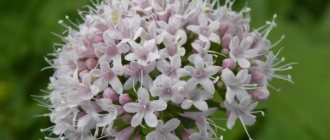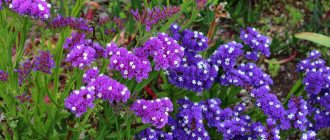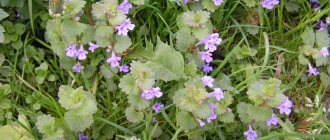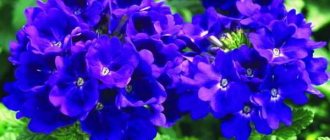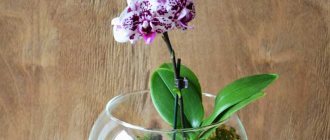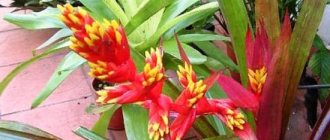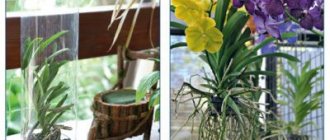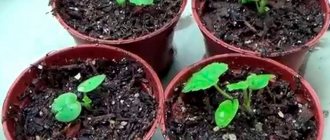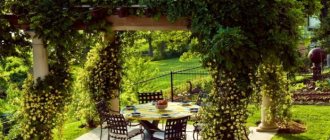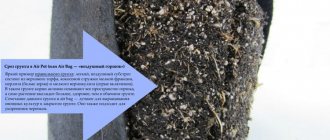Gomphrena is a dicotyledonous herbaceous flowering plant of the Amaranthaceae family. There are annual and perennial species. Lives in tropical latitudes. Most common in South America.
Gomphrena globulus is grown all over the world as an ornamental garden flower. Some species are found indoors. In eastern Asia it is eaten. In some regions it is used for medicinal purposes.
The advantages of the plant are that it is unpretentious, has a very long flowering period - until the onset of frost, the flowers do not lose their aesthetic qualities even when dried.
However, cultivation, especially at the first stage from germination to planting in the ground, is quite labor-intensive.
Types and varieties of gomphrena
About 100 species of plants are known. Each of them is good in its own way.
| View | Description/Varieties |
| Globular | The most common type. The leaves have hairs, which makes them appear silvery. Ball-shaped inflorescences give the species its name. It has several varieties of different shades. Together they look great in flower beds and provide space for the florist designer. Tall - up to 35 cm. There are dwarf varieties - up to 15 cm. The most famous varieties:
|
| Absent-minded | The inflorescences resemble carnations. Plants are cascading, creeping. The appearance benefits from alpine slides and hanging flower pots – where you want to create a cascade of flowers. The Pink Pinheads variety retains a beautiful soft pink color even when dried. Used in dry ikebana and floral crafts. |
| Golden-flowered (Haage) | Large inflorescences. The color is complex with a transition from carmine red at the tips to golden inside. Height 30-40 cm. Leaves are long, narrow, with a silvery tint on the back side. Very sensitive to cold. In cool summers it may not bloom at all. |
| Dwarf (Gnome) | Grows no higher than 10-15 cm. White, orange, pink. Thanks to its short flower stalks, it is widely used in borders and planted in outdoor pots. |
| Purple | The leaves are rich green and set off the beauty of the bright pink flowers. It grows up to 30 cm in height, grows well in width, and carpets the entire space allocated for it. Can grow in pots. |
| Strawberry | During flowering, it looks like a ripe strawberry because of the scarlet round buds. It reaches a height of 50 cm. It blooms from June to October. |
3.Varieties:
3.1.Globular gomphrena - Gomphrena globosa
A low herbaceous annual, reaching 30 - 60 cm, with erect, strong, branched stems at the base. The leaves are entire, oblong-oval, glossy, green, on short petioles. In the summer months, the plant decorates itself with spherical apical inflorescences, reaching 4 cm in diameter and consisting of many bright bracts, colored in red, pink, and purple shades. The flowers are tiny, tubular, cream, yellow.
↑ Up,
3.2.Gomphrena Haage - Gomphrena haageana
Quite tall herbaceous plants, reaching 60 - 70 cm with erect, strong stems. The leaves are green, narrow, lanceolate, 3 to 8 cm long, covered with long pubescence. Globular inflorescences appear in the summer months at the tops of the stems and reach a diameter of 2.5 cm. The bright bracts are colored in red, crimson, yellow or orange. The flowers are small, tubular, yellowish.
↑ Up,
Growing gomphrena from seeds
Flower growers in Russia prefer annual varieties, simply because they do not tolerate the harsh climate in winter.
It is easier to sow new plants every year than to wait for them to overwinter.
Preparing seeds for planting
Preparing seeds for seedlings is somewhat different from the traditional one.
- The seeds are poured with a sufficiently large amount of warm water (about a glass).
- Leave at room temperature for three days, change the water every day and stir.
- Then use a sieve to drain the water. The seeds are washed under running water and placed in a glass container with a lid and placed in the refrigerator.
- There they stratify over the course of a week.
Time for sowing seedlings
It very rarely grows from seeds when planted directly in the ground, as it needs warmth and a long growth period. Therefore, it is grown by propagating seedlings.
They are sown already in February, early March in boxes with prepared soil.
Sowing rules
Sowing gomphrena seedlings has several conditions that are not difficult to comply with:
- Prepare the soil from equal parts of garden soil and humus. The second option is possible - from universal soil and vermiculite in a 1:1 ratio.
- Moisten the substrate so that it is moist but does not stick to your hands.
- Fill the planting boxes. It's better to take cassette ones.
- Compact the soil.
- Make a hole in each cassette using a wooden stick, knitting needle or pencil.
- Carefully pour the wells with filtered water. The most convenient way to do this is from a used medical syringe without a needle or with a syringe. After planting, you no longer need to water the soil.
- Place prepared seeds from the refrigerator 1-2 per hole. Even two sprouts in one container will not interfere with each other's growth.
- Level and lightly compact the soil, cover with film or cover with glass.
- Be sure to place the tray with the seeds in a bright, very warm place - directly above the radiator or near it, on a windowsill that faces south and warms up in the sun. The optimal temperature for germination is +30…+40 °
C. Shoots will appear in three days.
If the temperature is below optimal (but not less than +20...+22 °
C), germination will occur in about two weeks. - After the seeds have sprouted, remove the cover and protect the planting from direct sunlight.
- If a common rather than a cassette container was used for seedlings, they will have to be plucked after 2-3 true leaves appear.
- During seedling growth, it is very important not to flood it with water. Tender seedlings will die from excess moisture.
The sprouts can be fed with a universal composition for seedling growth, for example, “Krepysh”.
Planting gomphrena in open ground
Gomphrena loves light, not heavy soil. To do this, you can add sifted river sand to the ground before digging.
But the soil is not as important as the light.
Moreover, you should not apply organic matter and mineral fertilizers before planting.
The main thing is to choose a sunny place and avoid open, windy areas with drafts.
What time to plant
Gomphrena is planted only when the ground has thawed and warmed up, and stable warm weather has established itself without temperature changes. This becomes possible in May, sometimes in more northern latitudes - in June.
Landing rules
The grown seedlings are transplanted into previously prepared soil. To do this, holes are made at a distance of 30 cm for ordinary ones, 20 cm for dwarf species.
Each plant is well kneaded and watered.
Cut flowers
You can use garden shears to cut flower stalks, but they can easily be broken off by hand. They can be placed in a vase without water. By picking flowers at different stages of bud opening, you can create an interesting bouquet of different sizes. In the case when the inflorescences completely fade in the garden, they can be removed only if they have lost their original appearance. But, since the plant is a dried flower, they look great even after the end of the active flowering phase. In addition, you can collect seeds from them.
Caring for gomphrena in the garden
Gomphrena - loves warmth and light. It requires a lot of space for full development, growth and flowering. There should be no larger plants in the flower beds that could obscure or crowd it out.
Tolerates drought and heat well. Not demanding on watering.
Formative pruning is recommended for plants during flowering. Cut flowers last well in vases for a long time.
And the gomphrena in the flower beds will bloom even thicker and more luxuriantly.
Watering and fertilizing
2-3 days after planting in open ground, you can feed with mineral liquid fertilizer. For example, potassium-phosphorus and nitrogen. Also use ready-made complex mixtures.
Fertilizing must be done twice, but only before flowering begins.
Excessive amounts of fertilizer can lead to the plant not blooming at all, or flowering will be sparse, and the entire space will be filled with leafy green mass.
Therefore, during flowering, regular but moderate watering will be sufficient. If it rains periodically in the summer, you won’t have to water the gomphrena at all. She will only need moisture during a short drought.
Botanical description
|
Wintering
If there is still a need or a strong desire to plant perennial gomphrena, you will have to try to provide it with safe wintering conditions.
The first, most reliable way: replant for the winter together with a lump of earth in a spacious pot and put it in a warm, dry place.
Second: Trim the ground parts, mulch with dry leaves or straw, cover with covering non-woven material, and then with film. Remove the shelter only after the threat of morning and night frosts has ended.
Features of the plant
According to the description, Gomphrena refers to plants that differ in the type of stem, leaves and flower color. What they all have in common is unpretentiousness, high decorative qualities and the formation after flowering of an indehiscent achene with smooth, flattened seeds.
In the middle zone, annual Gomphrena is more often grown. Moreover, the seeds are germinated at home, and then the seedlings are planted in the ground. The flowering period begins in June or July. With proper care it can last until frost.
Diseases and pests of gomphrena
In general, gomphrena is not very sensitive to diseases. She is exposed to them only occasionally. But even in this case, the situation can be saved.
| Disease/pest | Symptoms | Corrective measures |
| Blackleg | Blackening of stems, loss of turgor. | Stop watering for a while. Sprinkle the soil with wood ash and loosen it. |
| Aphid | The appearance of sticky plaque and insects on the leaves. | Spray with soap or ash solution. In difficult cases, use insecticidal preparations. |
| Cercosporiosis | Dark spots, leaf deformation. | Treat with fungicides (Fundazol, Agat, Vectra, Thanos). |
